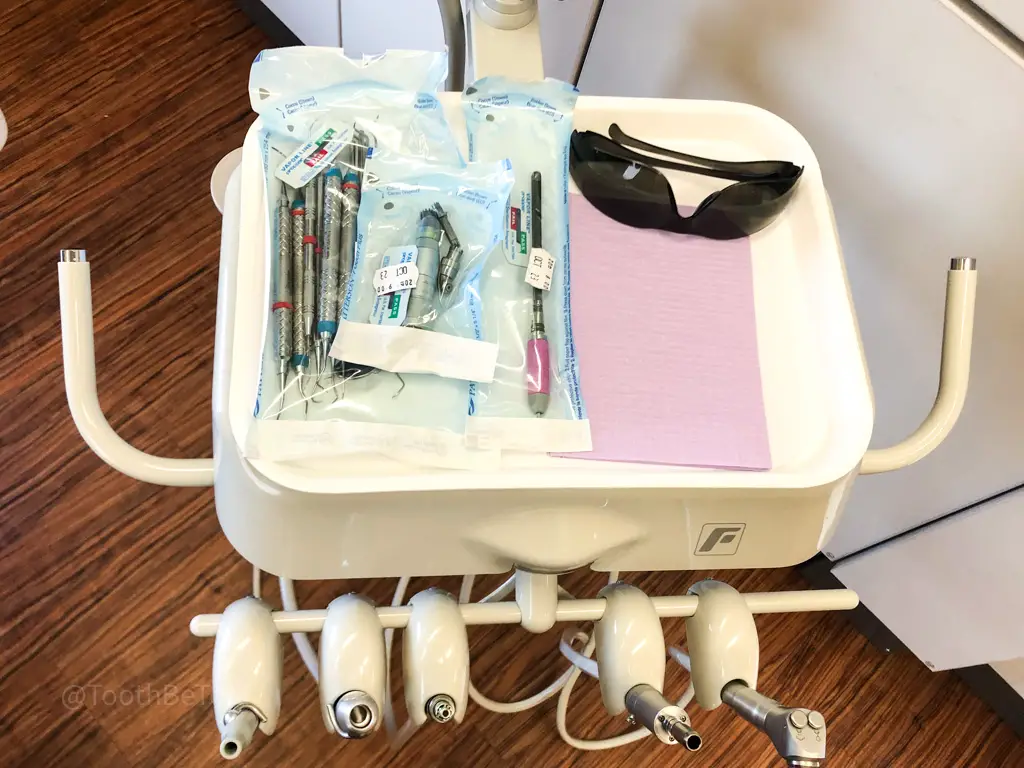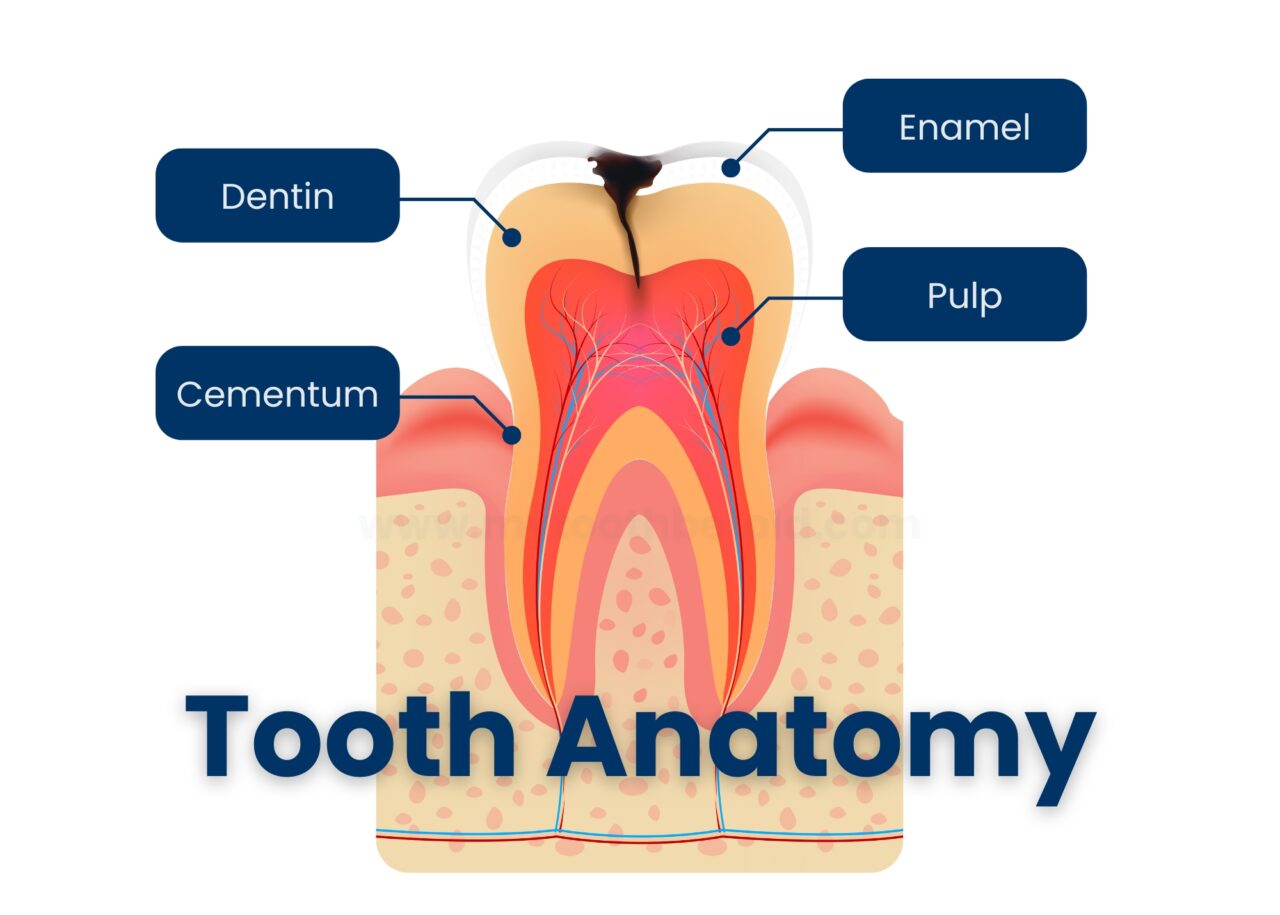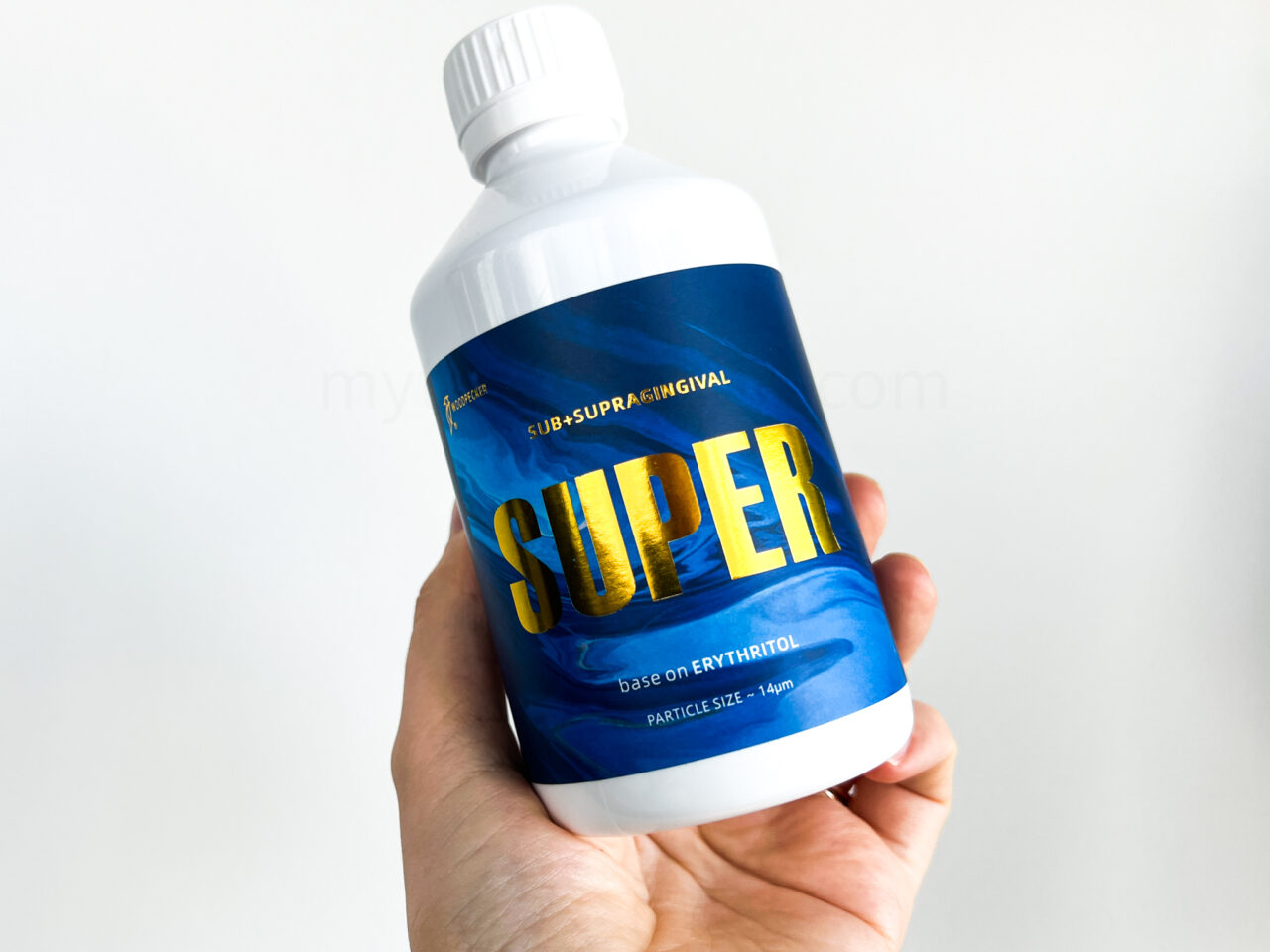
Many people think that polishing is a vital part of the dental hygiene appointment. As a registered dental hygienist, I confidently tell you that just because it can make your teeth feel smooth and shiny, polishing isn’t always necessary and can even have some drawbacks. If you are questioning having your teeth polished at your dental appointment, here is when you should not have your teeth polished.
Traditional dental polishing with abrasive pastes should not be performed if no stain or heavy plaque is present. It should not be done on teeth with dental restorations, acid erosion, receding gums, or moderate to severe inflammation in the gum tissue.
In this post, I will expand on the effects of teeth polishing, when polishing is necessary and when it should be avoided, how to ask your dental professional to skip the polish, why polishing is pushed on patients, and a new, modern, safe alternative that you should ask your dental professional to use instead: air polishing with erythritol powder.
Tooth polish effects on tooth structure; enamel and dentin
Polishing with traditional polish paste is abrasive and takes off a microscopic layer of your tooth surface, which doesn’t benefit your oral health, as plaque starts to form again seconds after removal.
Enamel is the hardest tooth structure, and the outer layer, where it comes into contact with fluoride, is stronger than the inner section of enamel. This harder/stronger layer on the outside protects the teeth from sensitivity and tooth decay and prevents tooth translucency.
Read now: Preventing Tooth Translucency: 13 Tips to Maintain Enamel

Dentin is the outer layer of the tooth’s root surface and is much softer than the enamel on the tooth’s crown. So when someone has gum recession, and the root is exposed, it should not be polished, but often it is polished because the root surface also accumulates plaque and stain.
I also want to touch on air polishing with sodium bicarbonate powder. Sodium bicarbonate powder is contraindicated and should never be used. It is not pleasant; it is rough on the teeth, causing microscopic pitting, which can lead to more stains and bacteria retention.
Traditional polishing paste and sodium bicarbonate powder should not be confused with air-polishing with erythritol powder. I will touch on this at the end of this post.
What Does Polishing Actually Do?
Polishing is an abrasive process that removes a microscopic layer of the tooth surface, including surface stains and the first layer of dental plaque, the acquired pellicle. However, the pellicle starts reforming within seconds after removal.
When Tooth Polishing is Necessary:
- Poor Oral Hygiene: If a patient comes in with a lot of plaque and food debris on their teeth, I might polish their teeth before cleaning to see the teeth better.
- Surface Stain: If there’s a surface stain that I can’t remove during cleaning, I’ll use polish. Often, the stain is embedded in tartar (calculus) and won’t come off with just polishing.

When Polishing is Not Recommended:
- No Surface Stain: If you don’t have surface stains or a lot of plaque, save your enamel. Once it’s gone, it’s gone.
- Dental Restorations: Dental crowns, bridges, and veneers should not be polished, as this can wear away their glazing layer, causing more staining over time and making the surface appear duller.
- Receding Gums: Polish’s abrasive nature can remove even more of the root surface, which is softer than enamel.
- Gingivitis: With moderate to severe gingivitis, abrasives in the polish can get under the gumline and affect healing after a cleaning.
- Acid Erosion: Thin tooth surfaces due to acid erosion can be further damaged by polishing, exposing the yellow dentin underneath, making your teeth appear yellow and increasing tooth translucency.
Personal story:
I had this conversation with my massage therapist and told him the risks, side effects, and motives behind polishing that I have expressed in this post. The next time he visited his dental hygienist, he told them he didn’t want the polish. He told me that they were shocked, and he said that he doesn’t have stains on his front teeth and that he heard it takes off a thin layer of tooth structure. He thanked me for the information I gave him, and he was upset that his hygienist never told him about the polishing risks.
Can You Skip Polish at the Dentist?
You can skip polishing at the dentist. While it may feel satisfying to leave with ultra-smooth teeth, the primary goal of a dental hygiene appointment is to maintain oral health, not just aesthetics. Polishing is not essential for everyone and should only be reserved for specific situations.
If you maintain good oral hygiene and don’t have significant staining or plaque buildup, you can opt out of polishing to preserve your enamel. Discuss your preferences and concerns with your dental hygienist; they can tailor your care to what’s best for your dental health.
Skipping polishing won’t negatively impact the effectiveness of your cleaning or your overall oral health. In fact, it can help protect your teeth in the long run by preserving your enamel.
Remember, it’s your dental appointment, and you can choose the services that align with your needs and health goals.
Hey there! I’ve put together a resource with the best dental products that can really make a difference. Check it out and see for yourself here!
Are There Any Side Effects of Teeth Polishing?
Yes, there can be side effects of teeth polishing. While occasional polishing is generally safe, frequent or unnecessary polishing can lead to several issues:
- Enamel Erosion: Polishing is abrasive and can wear away a microscopic layer of enamel each time. Over time, this can thin your enamel, making your teeth susceptible to sensitivity and decay.
- Increased Staining: If you have dental restorations like crowns, bridges, or veneers, frequent polishing can wear away their glazing, leading to increased staining over time.
- Gum Irritation: For patients with gingivitis or receding gums, the abrasive nature of polishing can irritate the gums and potentially exacerbate gum recession.
- Tooth Sensitivity: Thinning enamel and exposed dentin can increase tooth sensitivity, making eating and drinking hot or cold foods and beverages uncomfortable.
Understanding these potential side effects can help you make informed decisions about whether to include polishing in your dental hygiene routine. Always discuss your specific oral health needs and concerns with your dental professional.
Why Some Dental Offices Push Polishing
Some dental offices see polishing as a money-making service, charging around $35-45 per patient. Unfortunately, some might not explain the potential risks because it’s profitable. But it’s important to ask your dental professional questions about your treatment. Polishing doesn’t impact cavities or gum disease and won’t improve your oral health.
Selective Polishing and Modern Alternatives:
Many of my patients choose to turn down polishing once they understand the risks. Some opt for a “selective polish,” where only specific teeth are polished.
As a dental hygienist, I polish my own teeth maybe once a year, focusing only on the teeth that need it. For example, I might polish the front surfaces of my bottom front teeth every six months due to some staining.

Air-Polishing with Erythritol: New Standard of Care
Traditional polishing techniques use a rubber cup or brush with abrasive paste, which can remove a microscopic layer of tooth structure.
However, modern air-polishing systems use 14-micron size erythritol powder, which does not damage tooth structure and is gentle enough for soft tissues in the mouth. These systems represent the new standard of care, providing optimal patient outcomes and a better experience. Learn more about these innovative systems here.
Keeping up with current evidence-based practices is essential in dental care. We dental professionals have an obligation to you, the patient, to provide you with the most effective technology that will provide you with the best oral health outcomes.
Keep smiling!
Holly Verran, RDH

